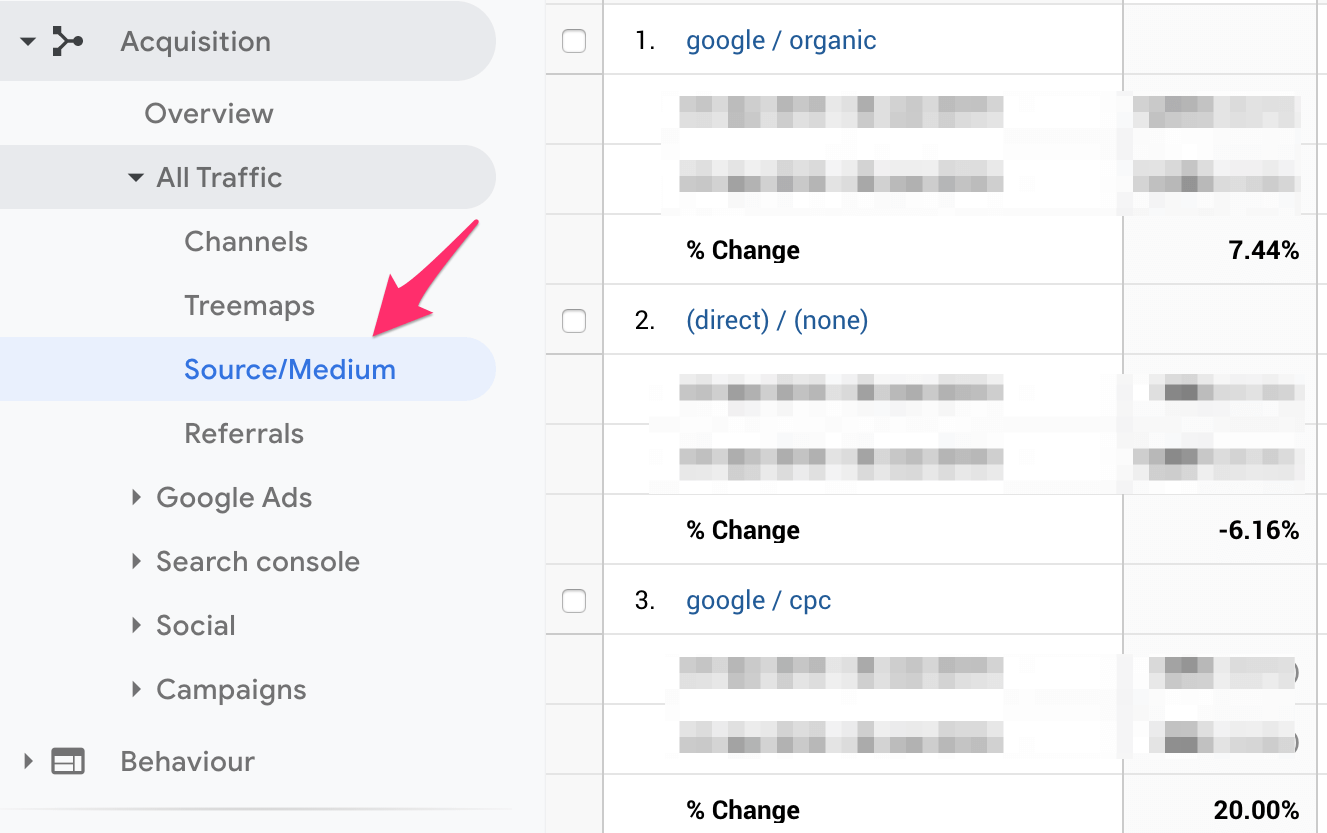Posted 29.10.2019
By Lucy Bradley
As a digital marketer, one of the worst problems you can come across is going on to your Google Analytics to see your traffic has plummeted. Panic! When this happens, it can be due to a variety of reasons – some drops are within your control to fix, and others are out of your control. The first step is to identify from what source you are losing traffic, and then you’ll be in a much more informed position to understand why this is happening. Use the blog below to identify why traffic is dropping on your website.
Before you can work out the reason why your traffic has dropped, you need to know where you’re losing traffic from. For example, if you find that you’re losing a significant amount of traffic from your Google Ads, the underlying problem will be different to a drop in traffic from organic sources. You can identify the source of traffic loss through the Acquisition tab on Google Analytics by using the Source/Medium report. Looking at a 3 month period (compared to a period of the same length) will allow you to spot significant traffic fluctuations, and then using the report below, you’ll be able to see what Source/Medium this decline has come from.

Seeing that your traffic has plummeted to zero can cause major stress, however most of the time the fix for this is one of the easiest. By using the Tag Assistant by Google (a free chrome plugin) you’ll be able to see if all the tags are working properly as well as spot which ones are missing. If a tag is failing to fire properly, you might need to get a developer involved just to check the tag is where it should be within the code.
![]()
It’s worth checking your robots.txt to make sure it isn’t blocking anything that it shouldn’t be. If you’ve had a new website recently, it could be the case your developers haven’t updated the robots.txt post-launch, if this is the case your robots.txt might looks something a little like this:

The above would be telling the robot that it should not visit any pages on your website, resulting in a lack of website traffic. Make the necessary changes, and then resubmit your robots.txt file.
We all know that Google isn’t afraid to make changes to its algorithm throughout the year. Whilst some of these updates are more significant than others, they can affect industries in different ways. If you suspect the drop in your traffic is due to an update from Google, check confirmed changes from Google themselves, or other sources such as Search Engine Roundtable or the SEMrush Sensor for live reports. You can then use these sites to find out how and why your site has been affected so that you can make the necessary changes to aid recovery.
A further common reason for website traffic decline is due to organic ranking fluctuations, which could be due to algorithm changes, or competitor activity for example. Use your choice of ranking monitor (ours in SEMrush) or search console to measure this and check for any ranking changes. You can then cross-reference the URL where rankings have dropped to the URLs where there has been a traffic decline. You can then adjust your SEO strategy accordingly to account for this drop.
You may not have actually had a drop in rankings, but the way in which your results are displayed in the SERPs may have changed. Perhaps you used to rank in the top 3 for ‘meter box covers’. However now, the search results are filled with ads, video results, featured snippets, and ‘People also ask’ SERP features. Because of this, you’re pushed down the page, appearing below the fold, and therefore sending less traffic to your site. To help combat this, think about ways you can better target these SERP features in your strategy.
We’ve left the trickiest problem to fix until last… With SEO best practice changing year on year, what was once seen as a strong SEO strategy is now known as ‘black hat’ and can result in penalties. There are now a full range of black hat SEO tactics people to manipulate the search engine’s rules to gain better rankings. Some of these negative tactics include:
Whether you are doing any of the above deliberately or unknowingly, you need to stop immediately. If you’ve noticed drops in traffic, the damage has most likely been done. To help reverse this, it’s advisable to involve a digital marketing expert to help the recovery process. If you would like some more advice, our digital team can help! Get in touch today.
Our Services
Recent posts
The Beginner’s Guide to Setting Up Your First eCommerce Store
Posted 25/03/2025 by Frogspark
How to Create Cost-Effective, Engagement-Boosting Videos For Your Website
Posted 11/02/2025 by Frogspark
Building Better Website Forms To Drive More Conversions (and Revenue)
Posted 27/01/2025 by Pete Bingham
Need help with your web design or digital marketing?
Talk to an expert today or call us on 01332 493766
Part of The Digital Maze Group